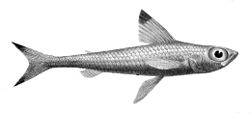Top Qs
Timeline
Chat
Perspective
Maastricht Formation
Geological formation in the Netherlands and Belgium From Wikipedia, the free encyclopedia
Remove ads
The Maastricht Formation (Dutch: Formatie van Maastricht; abbreviation: MMa), named after the city of Maastricht in the Netherlands, is a geological formation in the Netherlands and Belgium whose strata date back to the Late Cretaceous, within 500,000 years of the Cretaceous–Paleogene boundary,[1] now dated at 66 million years ago. The formation is part of the Chalk Group and is between 30 and 90 metres (98 and 295 ft) thick. It crops out in southern parts of Dutch and Belgian Limburg and adjacent areas in Germany. It can be found in the subsurface of northern Belgium and southeastern Netherlands, especially in the Campine Basin and Roer Valley Graben. Dinosaur remains are among the fossils that have been recovered from the formation.[2]
Remove ads
Lithology
The Maastricht Formation consists of soft, sandy shallow marine limestone (in Limburg locally called "mergel"), in fact chalk and calcareous arenite. These lithologies locally alternate with thin bands of marl or clay. The lower parts of the formation contain flint concretions. The upper parts can have shellrich layers. Its age is between about 70 and 66 million years, which puts it in the Maastrichtian, a stage that was named after the formation. The top of the formation has been identified as Danian (early Paleocene) in age.[3][4] The type locality is at the ruins of Lichtenberg castle on Mount Saint Peter, Maastricht.
Remove ads
Depositional Environment
Two primary environment-types have been described in the Maastricht Formation. The lower Kunrade Chalk representing a shallow, semi-lagoonal area near land of low relief which supplied terrigenous material. The Biofacies of the Kunrade Chalk are dominated by burrowing bivalves and abundant seagrass. In contrast, the upper Maastricht Chalk was deposited further offshore in clean carbonate sands. Periods of non deposition resulted in the lithification of sands forming hardgrounds that supported a diversity of echinoids and corals.[5]
Remove ads
Stratigraphy
The Maastricht Formation was first described by Belgian geologist André Dumont in 1849. The formation is subdivided in seven members, from top to bottom these are the Meerssen Member, Nekum Member, Emael Member, Schiepersberg Member, Gronsveld Member, Valkenburg Member and Kunrade Member. The members are often hard to distinguish.[6]
The Maastricht Formation is overlain by the Paleocene Houthem Formation and was deposited on top of the older Gulpen Formation.
Vertebrate paleofauna
Summarize
Perspective
Dinosaurs
Color key
|
Notes Uncertain or tentative taxa are in small text; |
Mammals
Color key
|
Notes Uncertain or tentative taxa are in small text; |
Mosasaurs
This section needs additional citations for verification. (September 2016) |
Color key
|
Notes Uncertain or tentative taxa are in small text; |
Testudines
Plesiosauria
- Indeterminate elasmosaurids[12][13]
Bony fish
Remove ads
Invertebrate paleofauna
Plants
Color key
|
Notes Uncertain or tentative taxa are in small text; |
Remove ads
See also
Wikimedia Commons has media related to Maastricht Formation.
- List of dinosaur-bearing rock formations
 The dictionary definition of maastricht formation at Wiktionary
The dictionary definition of maastricht formation at Wiktionary
References
Wikiwand - on
Seamless Wikipedia browsing. On steroids.
Remove ads























